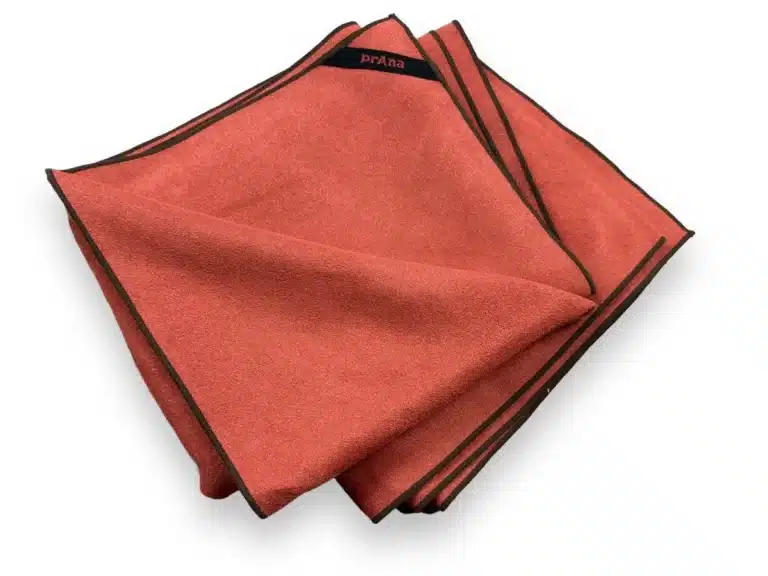Are Yoga Mats Toxic? Unraveling the Truth for Fitness Fans

Yoga is a popular form of exercise that offers numerous benefits for both the mind and body. However, as more people become health-conscious, concerns over the potential toxicity of yoga mats have been raised. Fitness enthusiasts are increasingly wondering whether the materials used in yoga mats could pose a threat to their health.
Understanding the potential risks associated with yoga mats is crucial in making informed choices. In this article, we will explore the different types of materials used in yoga mats and their potential toxicity. We will also provide tips on how to identify non-toxic alternatives and care for your yoga mat. Keep reading to unravel the truth about yoga mats and their impact on your health.
Understanding Yoga Mat Materials
Yoga mats are typically made with one of several types of materials, each with its own advantages and disadvantages. As a health-conscious individual, it’s important to understand the different options available to make an informed decision.
PVC Yoga Mats
PVC, or polyvinyl chloride, is a common material used in yoga mats due to its durability and affordability. However, PVC is known to be one of the most toxic plastics, as it can release harmful chemicals during manufacturing and use, including lead and phthalates.
Natural Yoga Mats
Natural materials such as rubber, jute, or cotton are a popular alternative to PVC. These materials are non-toxic and biodegradable, making them a more sustainable option. However, they may not provide as much cushioning as PVC mats and can be more expensive.
Organic Yoga Mats
Some yoga mats are made from organic materials, such as organic cotton or bamboo. These materials are grown without the use of harmful pesticides or fertilizers and are a great option for individuals looking for an eco-friendly product.
Sustainable Yoga Mats
Sustainable yoga mats are made from materials that are environmentally friendly and manufactured using sustainable practices. Some examples include recycled rubber or cork. These mats are a great option for those who prioritize sustainability in their purchasing decisions.
When it comes to selecting a yoga mat material, it’s important to consider factors such as toxicity, sustainability, durability, and price. By understanding the benefits and drawbacks of each type of material, you can make an informed decision that aligns with your personal values and needs.
Potential Health Risks Associated with Toxic Yoga Mats
While yoga mats are often viewed as essential tools for yoga practice, they can also pose potential health risks if they are toxic. The chemicals used in some types of yoga mats can leach out and negatively impact health.
One such chemical is phthalates, which is used in PVC mats to make them more flexible. Phthalates can disrupt hormones and have been linked to various health issues such as reproductive problems and respiratory issues.
Toxic yoga mats can also be harmful when they release volatile organic compounds (VOCs) into the air. VOCs can cause respiratory problems, headaches, and nausea, among other symptoms. It is important to note that these health risks are not limited to yoga mats, and can be found in many other synthetic products that we use daily.
In general, it is important to be aware of the potential health risks associated with toxic yoga mats. Choosing a non-toxic yoga mat can help minimize exposure to these chemicals and promote overall well-being.
Potential Health Risks Associated with Toxic Yoga Mats:
| Health Risks | Chemicals |
|---|---|
| Reproductive problems | Phthalates |
| Respiratory issues | Volatile Organic Compounds (VOCs) |
| Hormone disruption | Phthalates |
It is important to be aware of the potential health risks associated with toxic yoga mats. Choosing a non-toxic yoga mat can help minimize exposure to these chemicals and promote overall well-being.
To avoid any potential health risks, it is recommended to choose a non-toxic yoga mat. In the next section, we will discuss how to identify non-toxic yoga mats and the various benefits of using them.
Identifying Non-Toxic Yoga Mats
Choosing a non-toxic yoga mat is crucial for health-conscious yogis. Here are some tips to help you pick the right one:
| Label/Certification | Description |
|---|---|
| Eco-Friendly | Indicates that the mat is made of sustainable and environmentally friendly materials. |
| PVC-Free | Means the mat is not made of polyvinyl chloride, which can release toxic chemicals. |
| Chemical-Free | Indicates that the mat is free of harmful chemicals like phthalates, lead, and cadmium, which can affect health. |
Look for yoga mats that have one or more of these certifications:
- GOTS (Global Organic Textile Standard)
- OEKO-TEX Standard 100
- Cradle to Cradle
- USDA Organic
- Fair Trade
When in doubt, reach out to the manufacturer or seller and ask for more information about the materials used in the mat.
Benefits of Using Non-Toxic Yoga Mats
Aside from reducing your exposure to harmful chemicals, there are many benefits to using non-toxic yoga mats. Eco-friendly and natural options, in particular, can enhance your yoga experience and contribute to a healthier lifestyle.
- Improved grip and stability: Most non-toxic yoga mats are made with natural materials that provide excellent grip and stability, even during sweaty sessions.
- Enhanced comfort and support: Organic and sustainable yoga mats often offer superior cushioning and support to protect your joints and prevent injuries.
- Better breathability: Non-toxic yoga mats made with natural fibers are more breathable, reducing the risk of bacteria and mold buildup.
- Environmental benefits: Using eco-friendly and sustainable yoga mats reduces your carbon footprint and supports a more sustainable lifestyle.
By choosing a non-toxic yoga mat, you are not only protecting your health but also contributing to a healthier planet.
Finding the Right Non-Toxic Yoga Mat for You
Choosing the right non-toxic yoga mat can be a personal decision based on individual values and needs. Consider the following factors when selecting the perfect mat:
- Material: Look for natural and eco-friendly options such as organic cotton, natural rubber, or TPE (thermoplastic elastomers). Avoid materials such as PVC, which can contain harmful chemicals.
- Grip: Consider the level of grip needed based on your practice. Some mats have a stickier surface, which can be ideal for more intense practices, while others may have a smoother surface.
- Thickness: Consider the level of cushioning needed for your practice. Thicker mats can provide more support for joints, while thinner mats offer more stability.
- Price: Non-toxic and eco-friendly mats can come with a higher price tag, but consider the long-term benefits for both your health and the environment.
When looking for a non-toxic yoga mat, be sure to check for third-party certifications such as Oeko-Tex Standard 100 and GOTS (Global Organic Textile Standard) to ensure the mat meets environmental and ethical standards.
Organic and sustainable options, such as mats made from bamboo or cork, can also align with personal values and beliefs.
Example Mat Comparison Table
| Brand/Model | Material | Grip | Thickness | Price |
|---|---|---|---|---|
| Yoga Design Lab The Combo Mat | Natural rubber and recycled plastic bottles | High | 3.5 mm | $68 |
| Jade Yoga Harmony Mat | Natural rubber | High | 4.7 mm | $80 |
| Manduka eKO Lite Mat | Natural tree rubber | Medium | 4 mm | $78 |
Remember that the perfect non-toxic yoga mat for you may not be the same as someone else’s. Take the time to research and test out different options to find the one that fits your needs and aligns with your values.
How to Care for Your Yoga Mat
Proper care and maintenance of your yoga mat can prolong its lifespan and prevent the growth of bacteria or mold. Here are some tips on how to care for your yoga mat:
- Wipe down after use: Use a clean cloth or towel to wipe down your mat after each use to remove any sweat or oil. This will prevent the buildup of bacteria or other harmful substances.
- Clean regularly: Deep clean your mat once a week with a mild soap and warm water. Avoid using harsh chemicals or abrasives that could damage the material.
- Air dry: Hang your mat to dry in a well-ventilated area. Avoid exposing it to direct sunlight, which can cause the material to fade or deteriorate.
- Store properly: Roll your mat up when not in use and store it in a cool, dry place. Avoid folding it, as this can cause creases or cracks in the material.
By following these simple tips, you can keep your yoga mat clean and safe for your practice.
Traditional Yoga Mat Alternatives
If you’re looking to ditch your traditional yoga mat in favor of a more eco-friendly option, there are a plethora of alternatives available.
One great option is a cork yoga mat. Cork is a renewable resource that is both antibacterial and antimicrobial. It also provides excellent grip, making it a great choice for those who sweat during their practice.
Another option is a jute yoga mat. Jute is a natural, sustainable material that is both durable and biodegradable. Like cork, it provides excellent grip and is resistant to slips.
If you’re looking for something even more natural, consider a mat made from bamboo or hemp. Both materials are renewable and sustainable, and they provide a firm grip that improves with use.
If you prefer a traditional mat feel but still want to opt for an eco-friendly option, look for mats made from natural rubber. Natural rubber mats are sustainable and biodegradable, and they provide excellent traction and cushioning.
No matter which alternative you choose, be sure to research the material to ensure it aligns with your values and beliefs. And of course, always opt for a non-toxic option to prioritize your health and wellness.
Choosing a Yoga Mat for Kids
When it comes to selecting a yoga mat for your child, safety should be your top concern. Kids have sensitive skin and may be more susceptible to the harmful effects of toxic materials commonly used in yoga mats.
Here are some tips to help you choose a safe and non-toxic yoga mat for your child:
Look for Non-Toxic and Eco-Friendly Materials
Opt for yoga mats made with non-toxic and eco-friendly materials. Look for mats that are labeled as free of phthalates, PVC, and other harmful chemicals.
Some eco-friendly options include natural rubber, cork, and organic cotton. These materials are biodegradable and much safer than traditional materials.
Consider Thickness and Texture
Choose a mat that is the right thickness and texture for your child’s needs. A thicker mat provides more cushioning and support for joints, while a thinner mat may be better for balance poses.
Also, consider the texture of the mat. Mats with a grip-like surface help to prevent slips and falls, which is especially important for younger kids.
Check for Allergens
If your child has allergies, make sure to check the materials used in the mat. Some materials, such as latex, can cause allergic reactions in some children.
Consider mats made with hypoallergenic materials to minimize the risk of allergic reactions.
Practice Proper Hygiene
Teach your child to practice proper hygiene when using their yoga mat. Encourage them to wash their hands before and after yoga sessions and to wipe down their mat after each use.
Regular cleaning can help to prevent the growth of bacteria and mold, keeping your child’s mat safe and hygienic.
Frequently Asked Questions about Yoga Mats
Q: Are all yoga mats toxic?
A: No, not all yoga mats are toxic. However, some mats may contain harmful materials that can negatively impact your health.
Q: What are some common toxic materials found in yoga mats?
A: Some common toxic materials found in yoga mats include PVC, phthalates, and heavy metals.
Q: How can I tell if my yoga mat is toxic?
A: Look for yoga mats that are labeled as “PVC-free” or “non-toxic.” Additionally, check the materials used to make the mat and avoid mats that contain PVC or other harmful chemicals.
Q: Are natural or organic yoga mats safer than synthetic mats?
A: Natural or organic yoga mats may be a safer option for those looking to minimize their exposure to harmful chemicals. However, it’s important to check the materials used in these mats as well to ensure they do not contain any potentially toxic substances.





